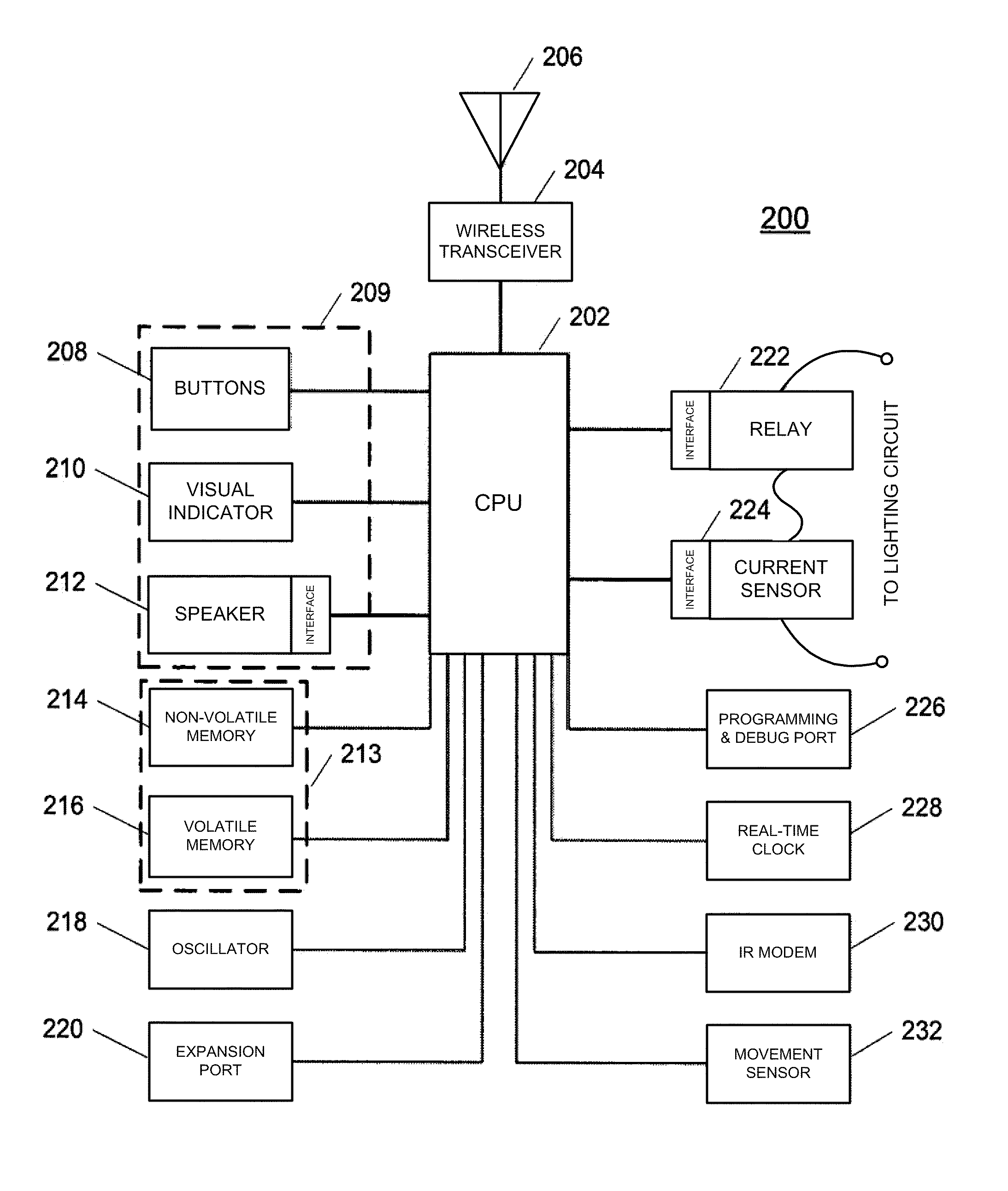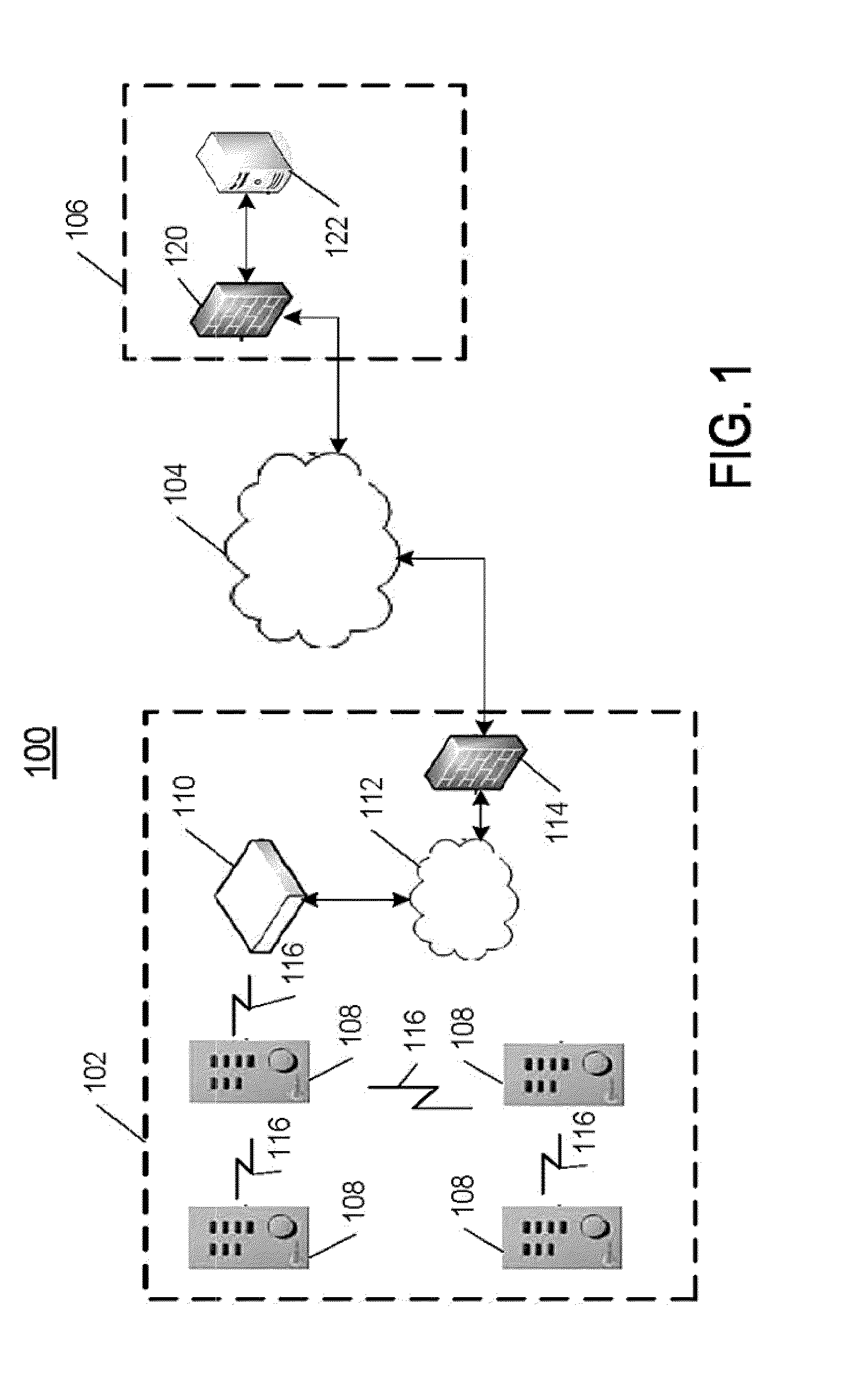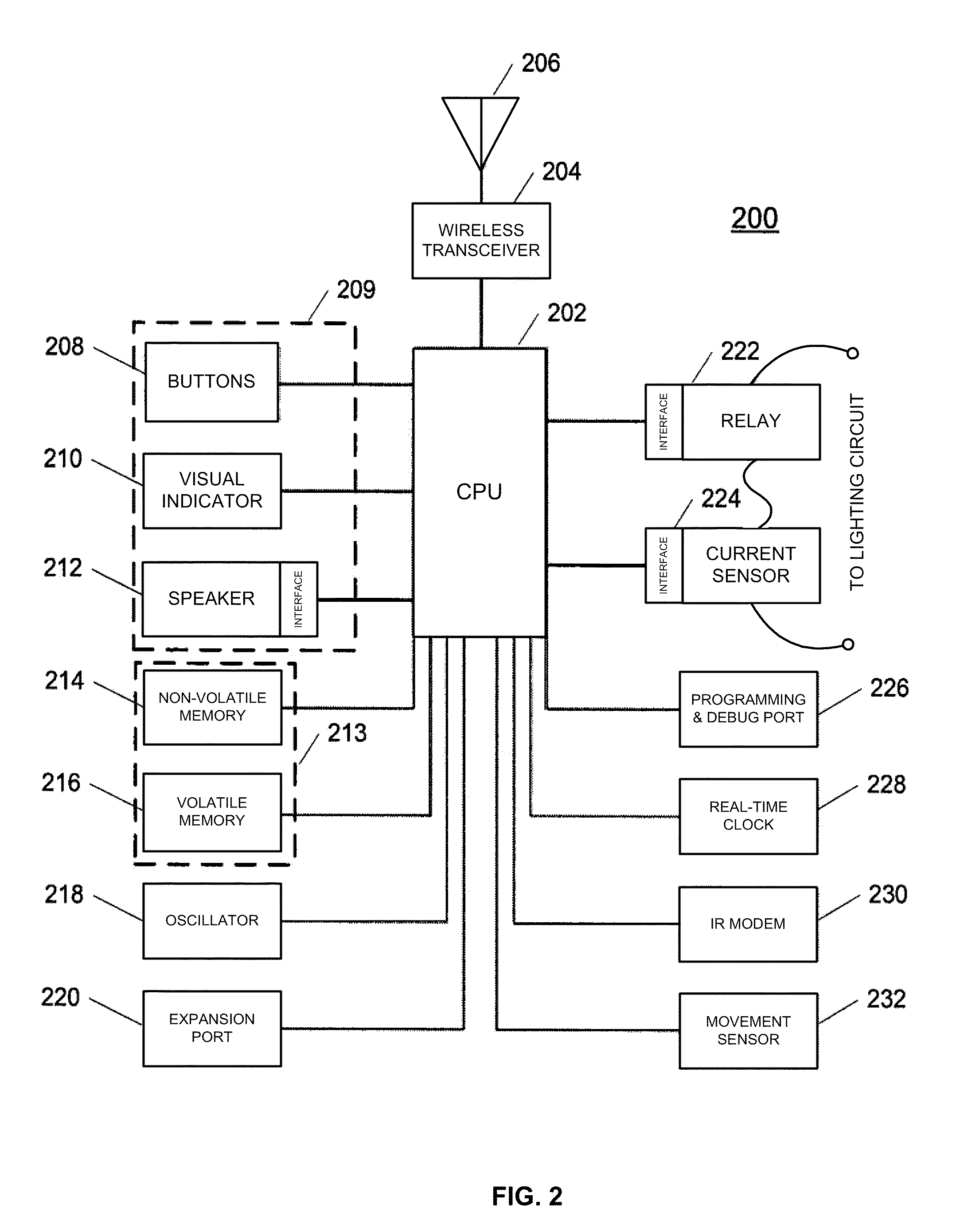Systems and methods for rules based, automated lighting control
a technology of automated lighting and rules, applied in the field of rules based, automated lighting control, can solve the problems of reducing the efficiency of time of day control, so as to reduce the electricity consumption and efficiency. the effect of
- Summary
- Abstract
- Description
- Claims
- Application Information
AI Technical Summary
Benefits of technology
Problems solved by technology
Method used
Image
Examples
Embodiment Construction
.”
BRIEF DESCRIPTION OF THE DRAWINGS
[0015]Features, aspects, and embodiments are described in conjunction with the attached drawings, in which:
[0016]FIG. 1 is a diagram illustrating an example lighting control system configured in accordance with one example embodiment;
[0017]FIG. 2 is a diagram illustrating an example embodiment of an intelligent switch that can be included in the system of FIG. 1 in accordance with one embodiment;
[0018]FIG. 3 is a diagram illustrating installation of the components comprising the switch of FIG. 2 into a standard electrical junction box, such as that used with standard light switch;
[0019]FIG. 4 is a flowchart illustrating an example process for updating the firmware in the switch of FIG. 2 in accordance with one embodiment; and
[0020]FIG. 5 is a flowchart illustrating an example process for detecting burnt-out lamps in the system of FIG. 1 using the switch of FIG. 2 according to one embodiment.
DETAILED DESCRIPTION
[0021]The systems and methods describe...
PUM
 Login to View More
Login to View More Abstract
Description
Claims
Application Information
 Login to View More
Login to View More - R&D
- Intellectual Property
- Life Sciences
- Materials
- Tech Scout
- Unparalleled Data Quality
- Higher Quality Content
- 60% Fewer Hallucinations
Browse by: Latest US Patents, China's latest patents, Technical Efficacy Thesaurus, Application Domain, Technology Topic, Popular Technical Reports.
© 2025 PatSnap. All rights reserved.Legal|Privacy policy|Modern Slavery Act Transparency Statement|Sitemap|About US| Contact US: help@patsnap.com



